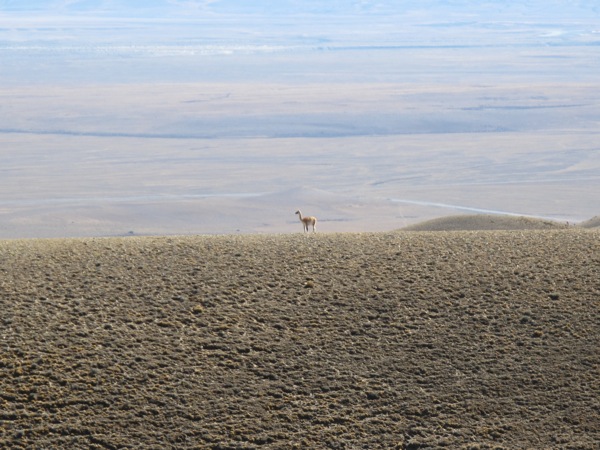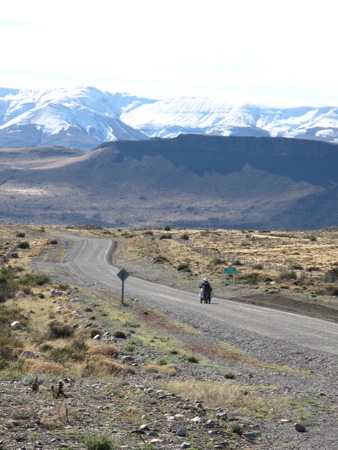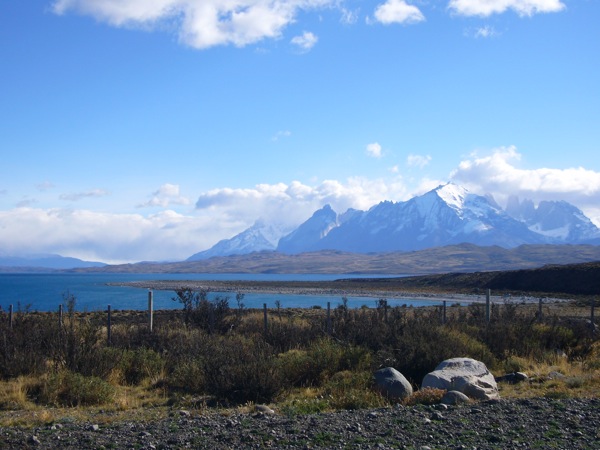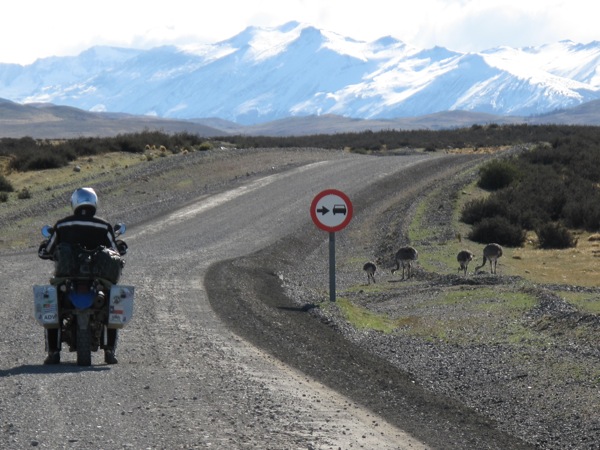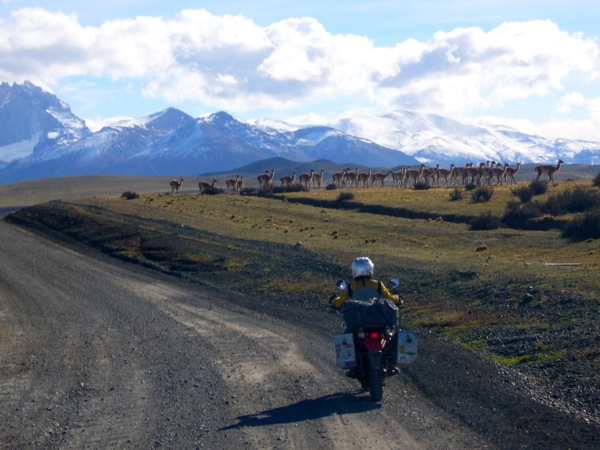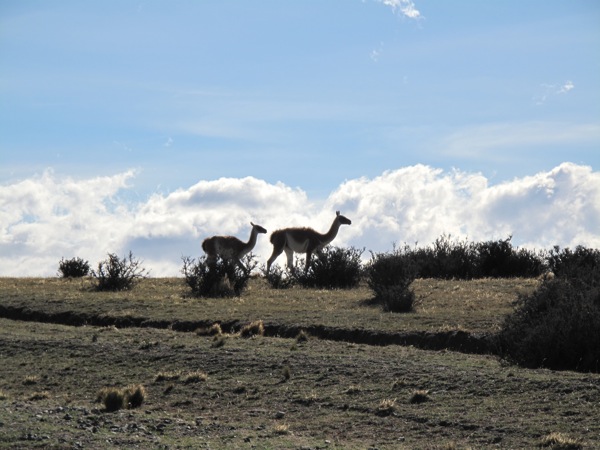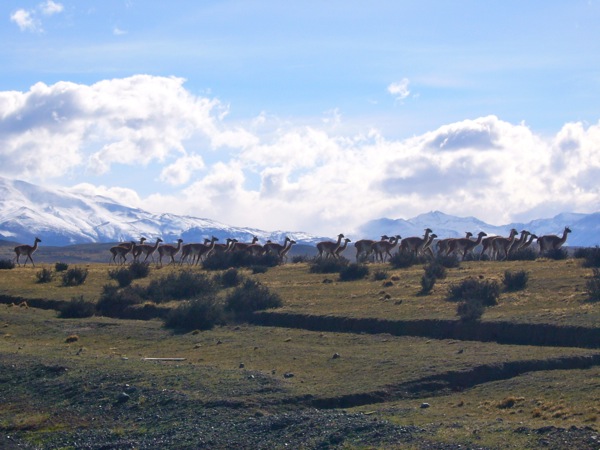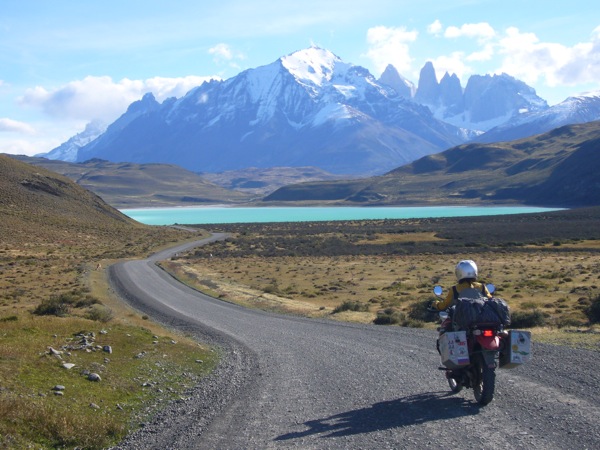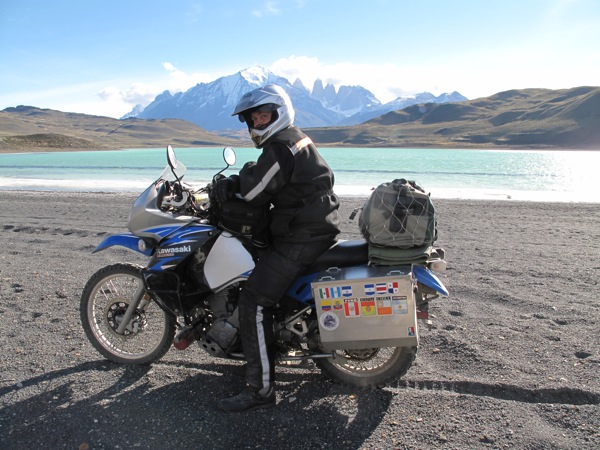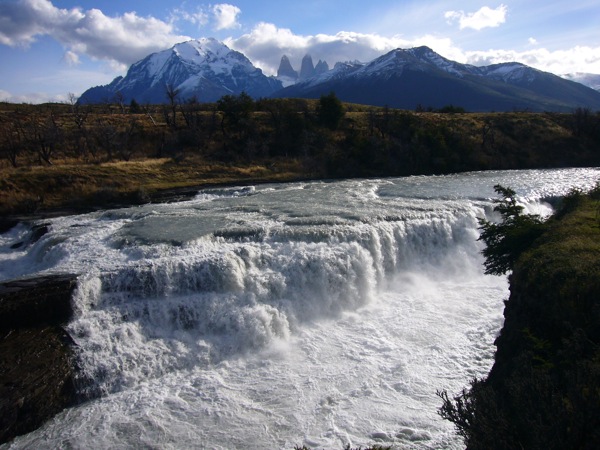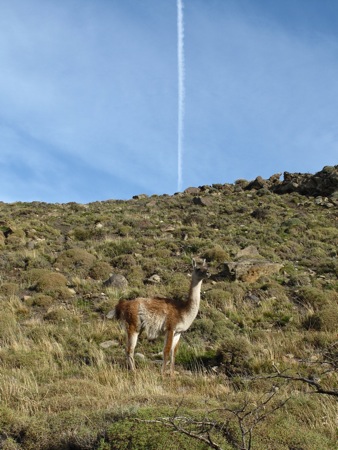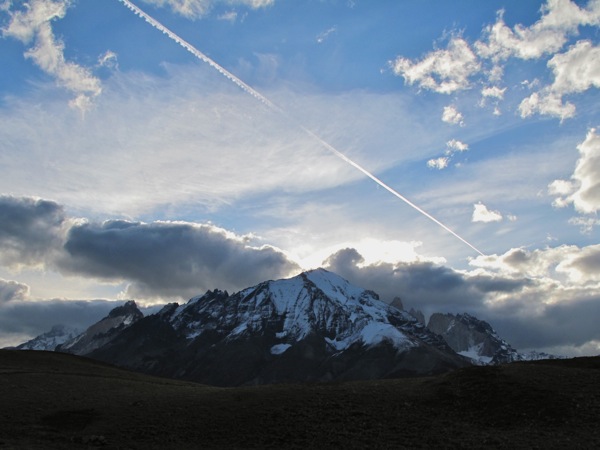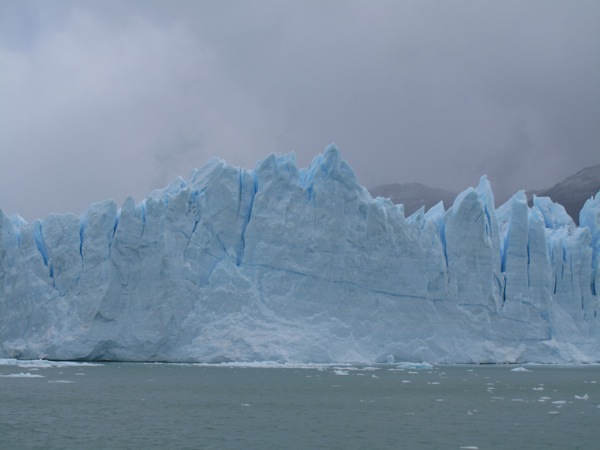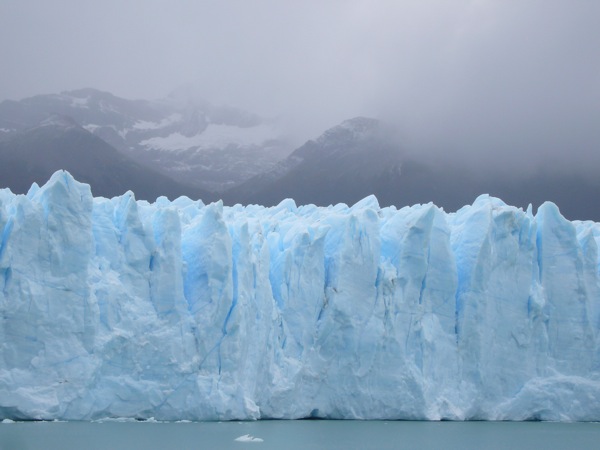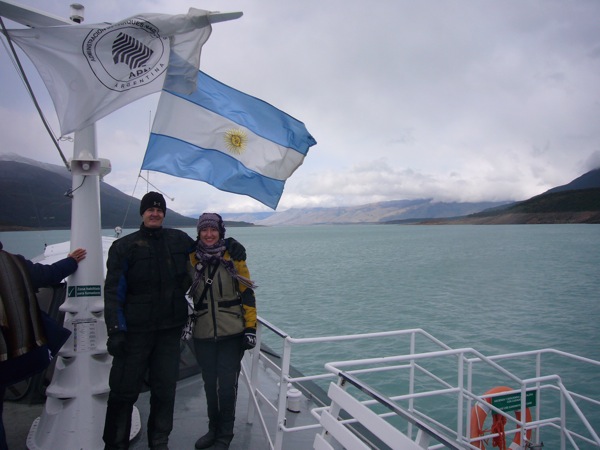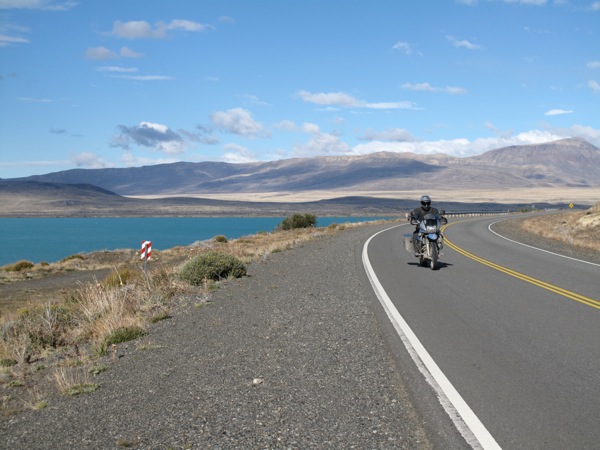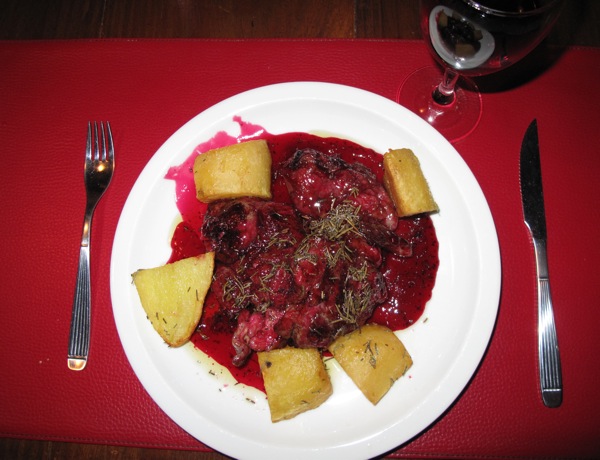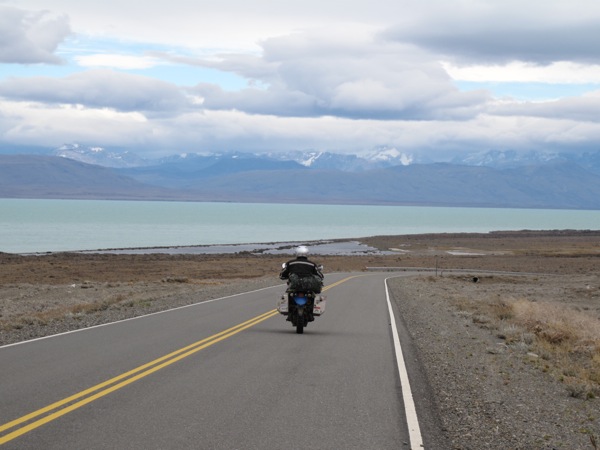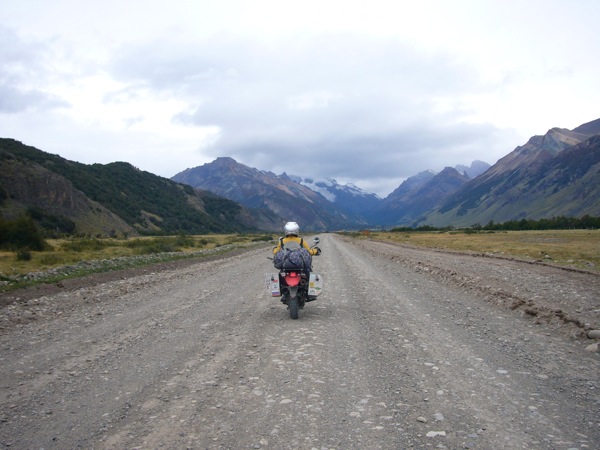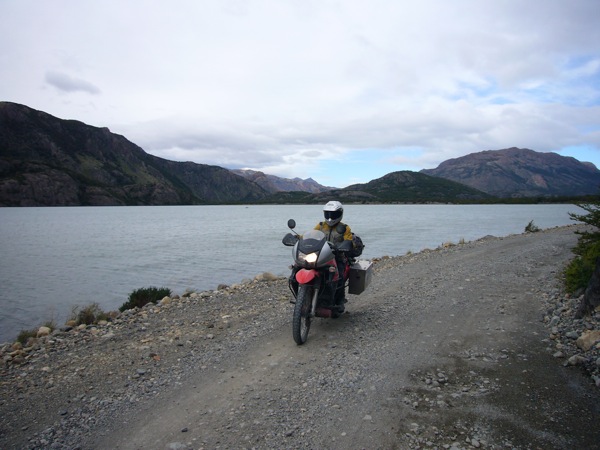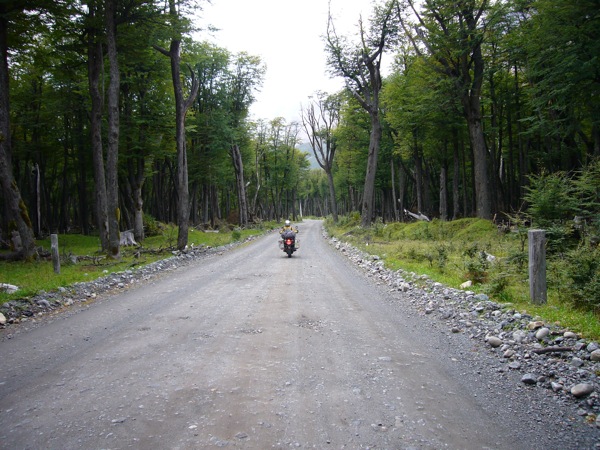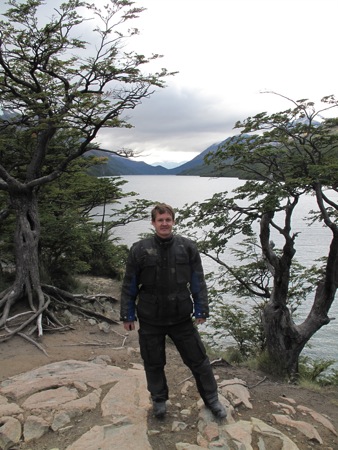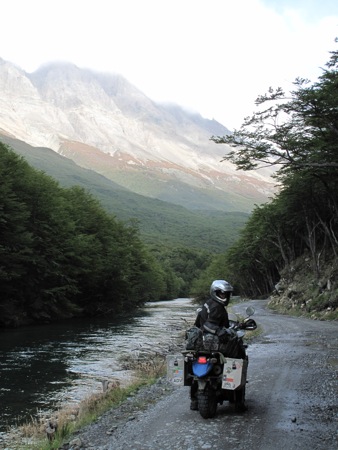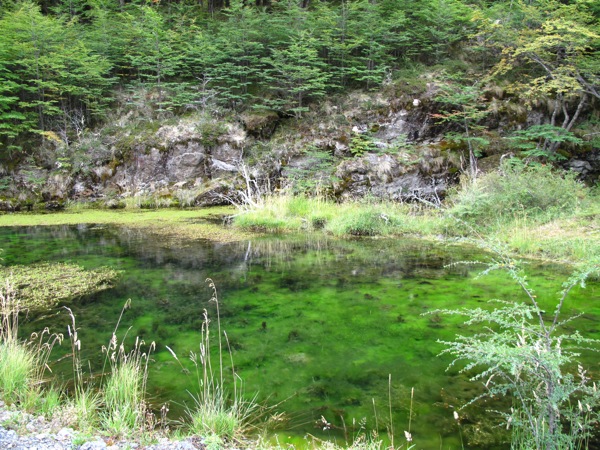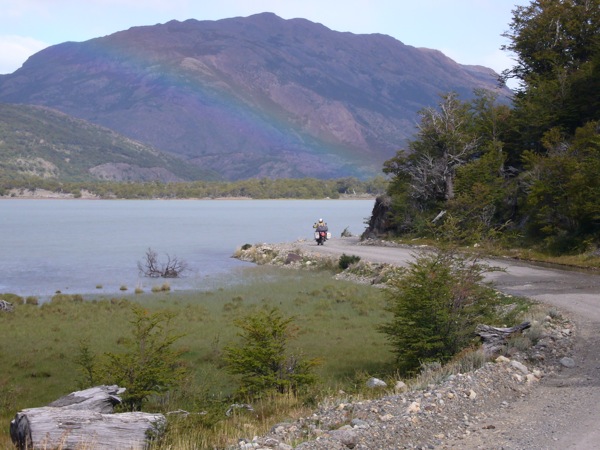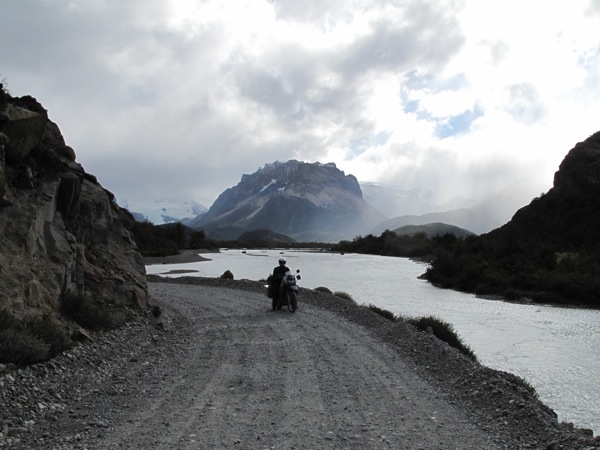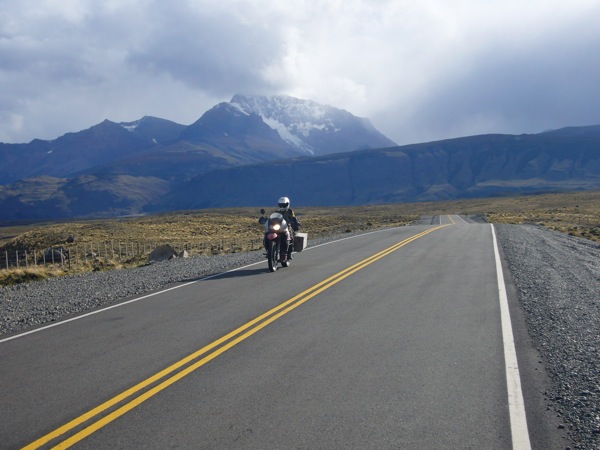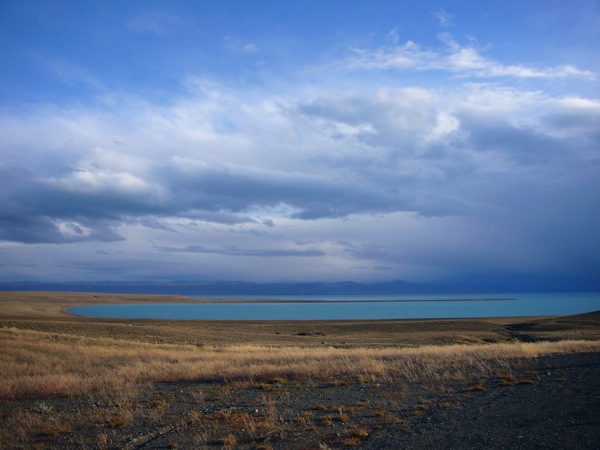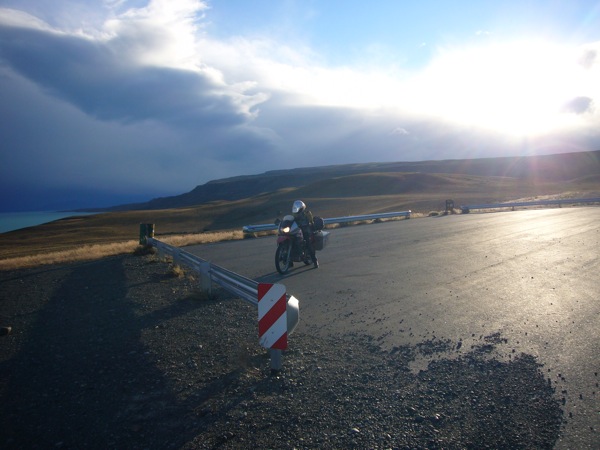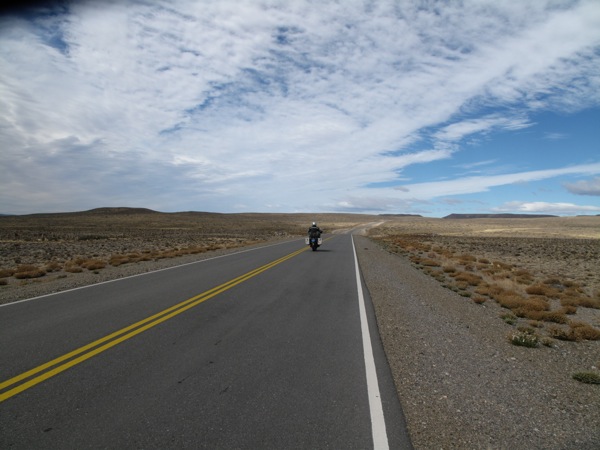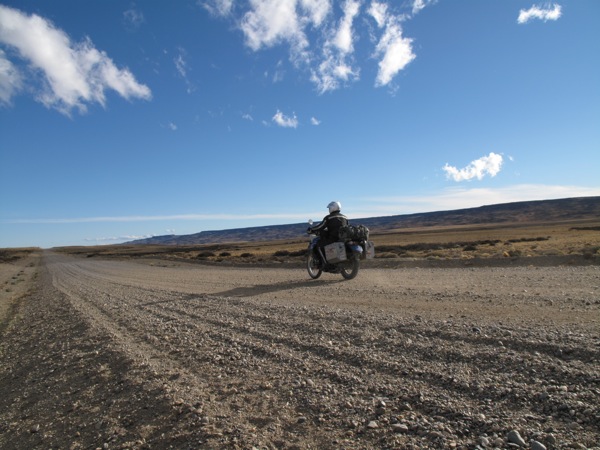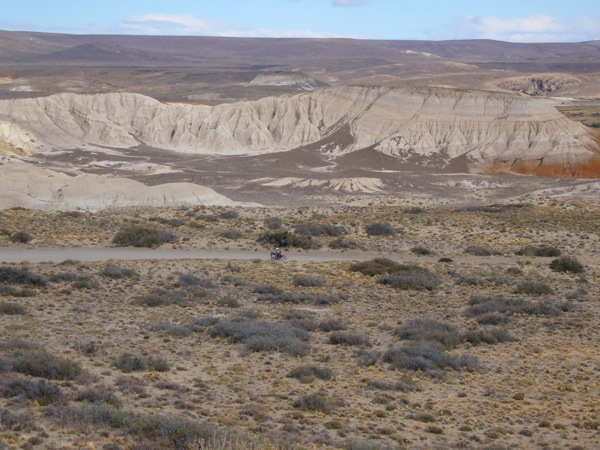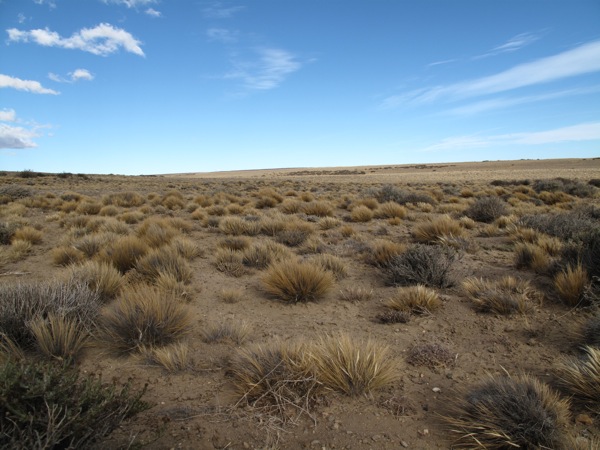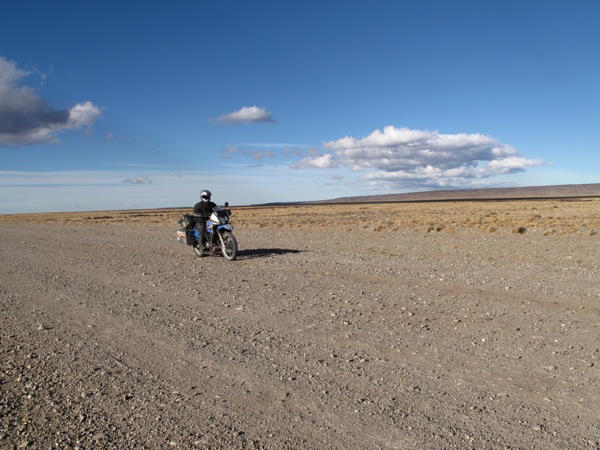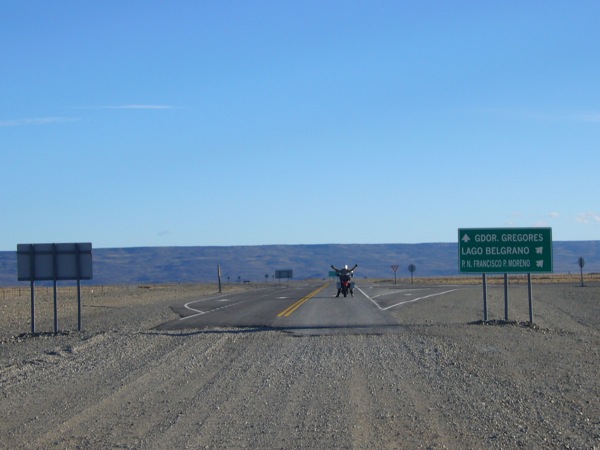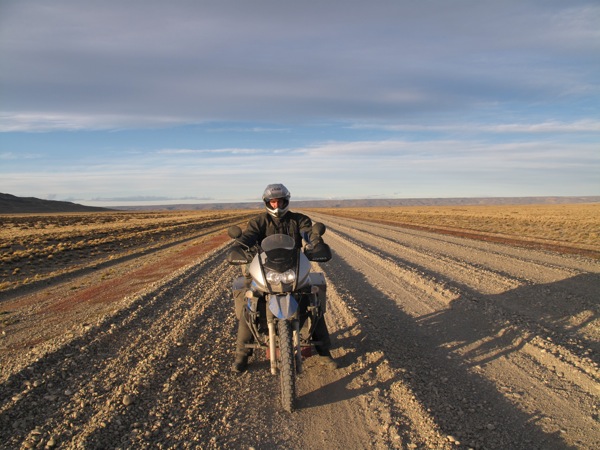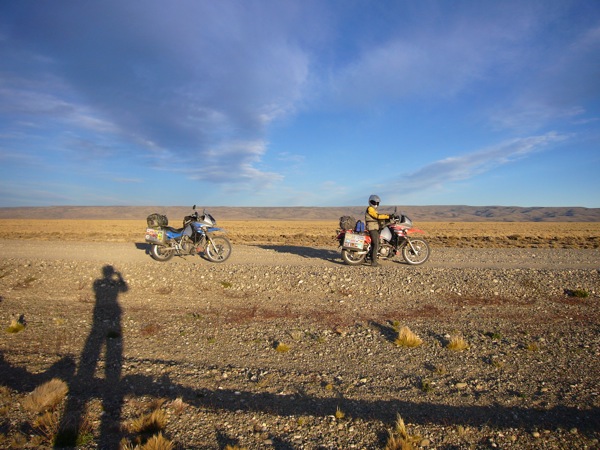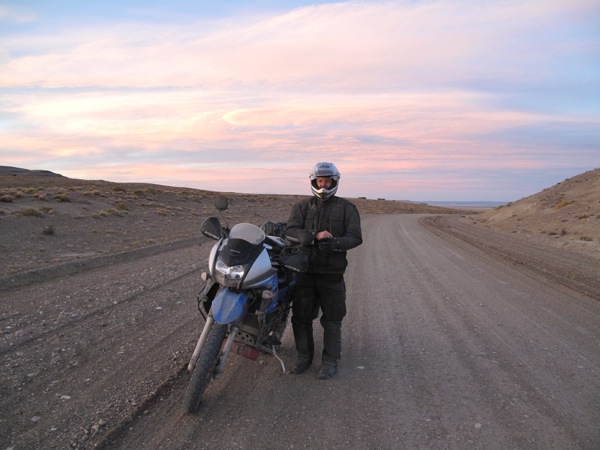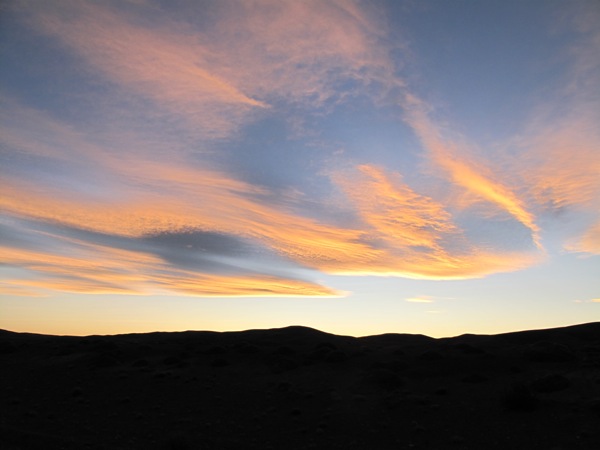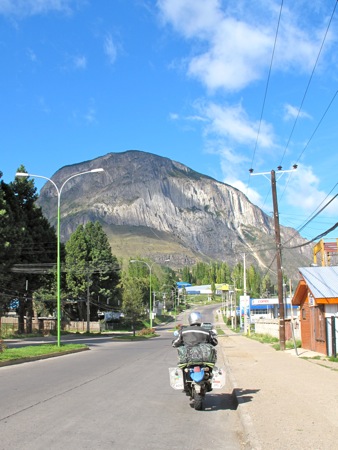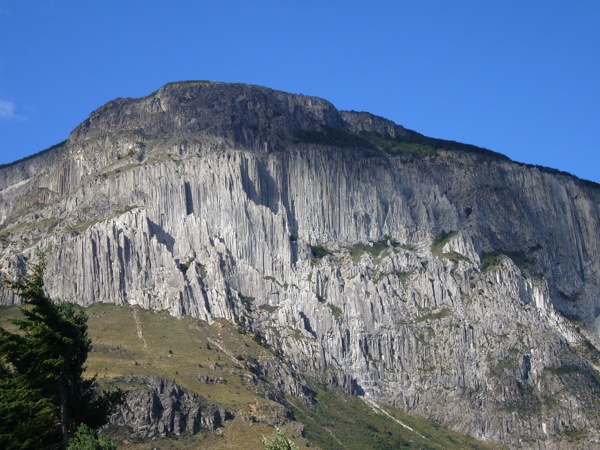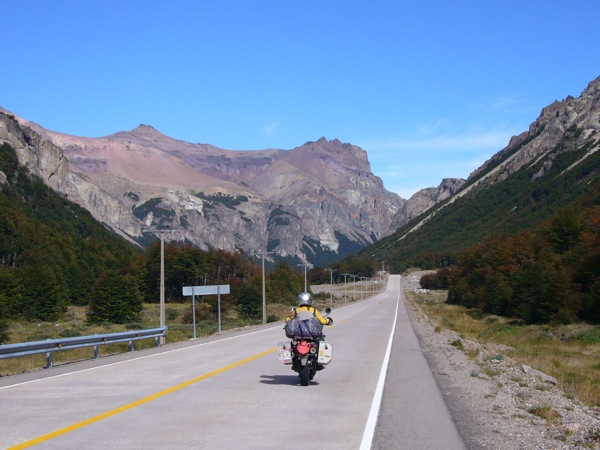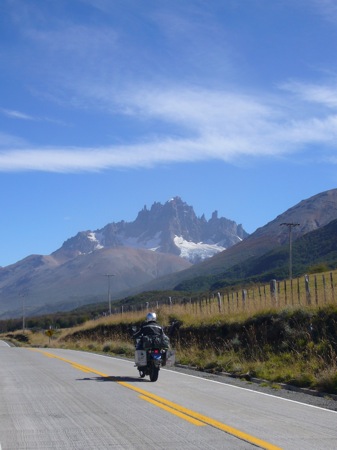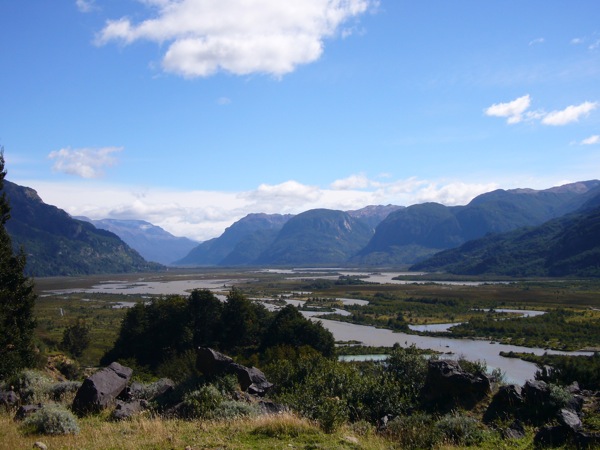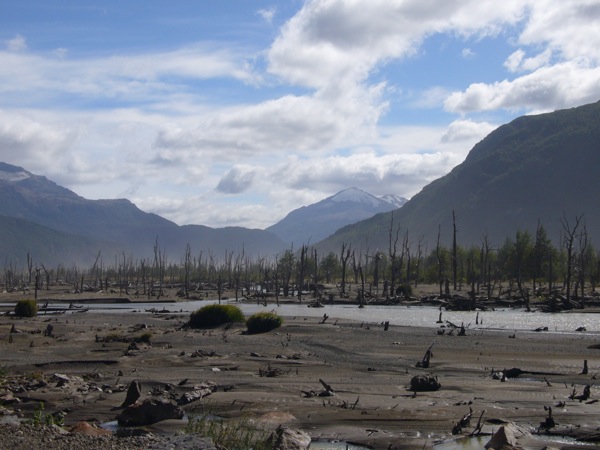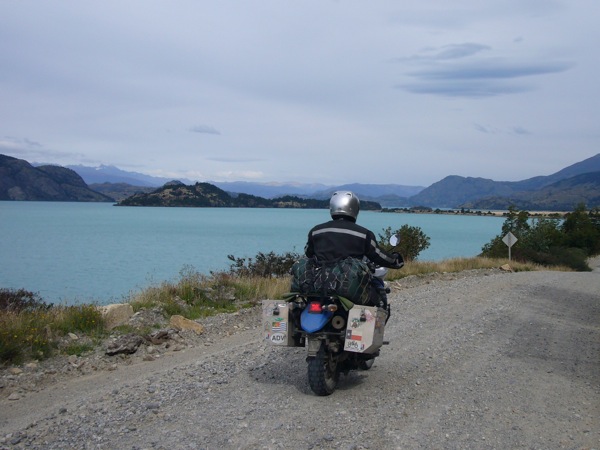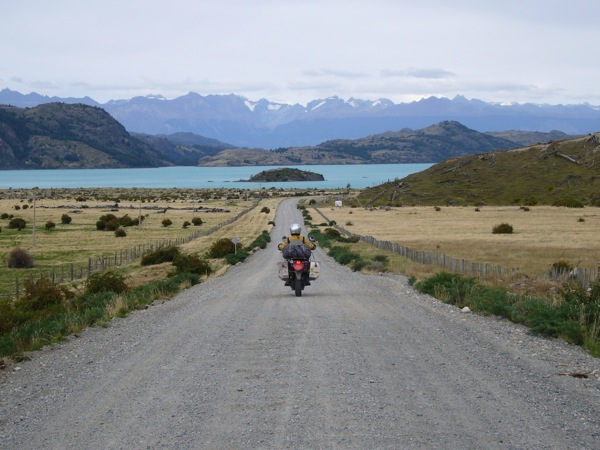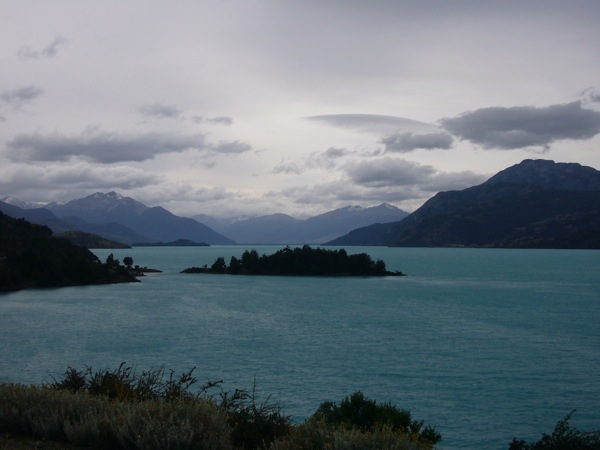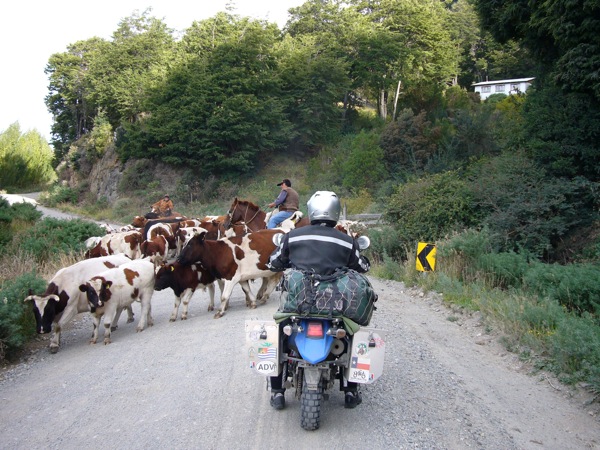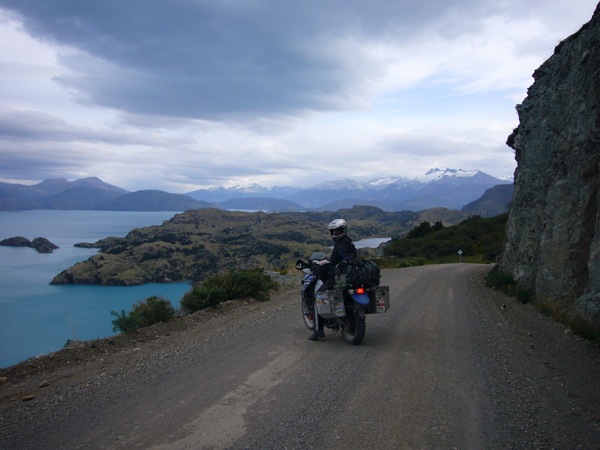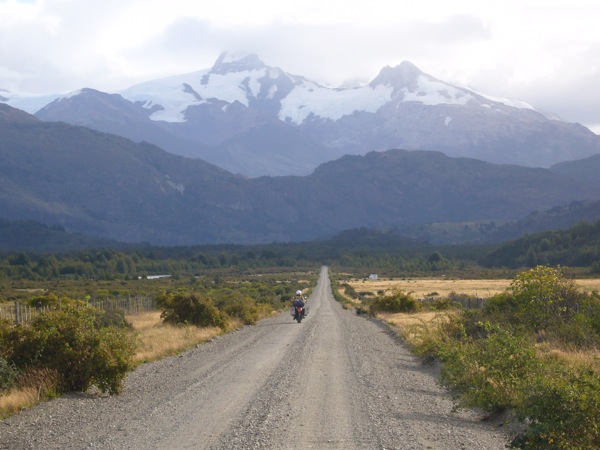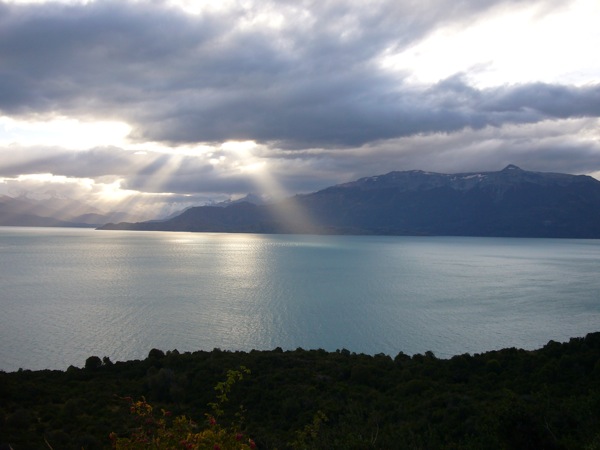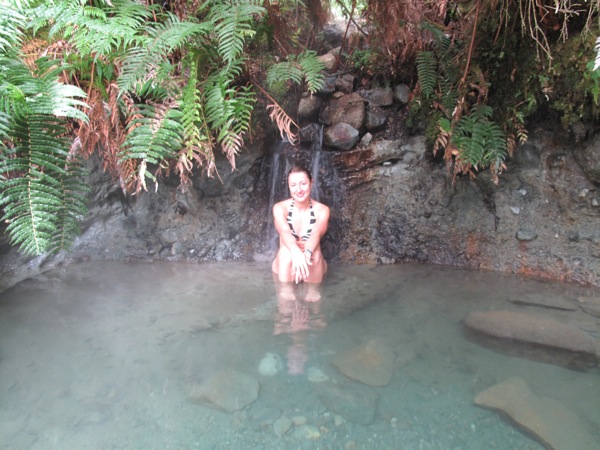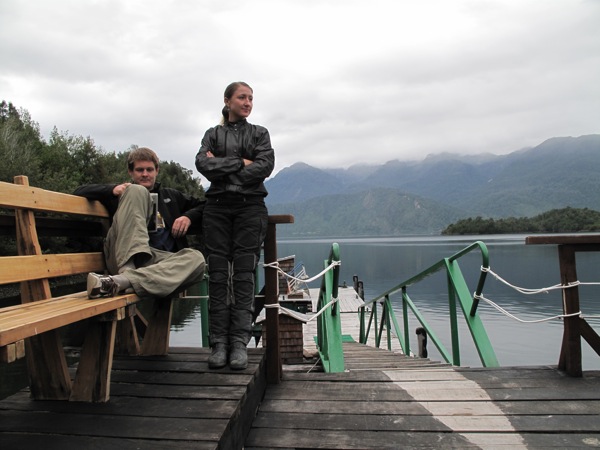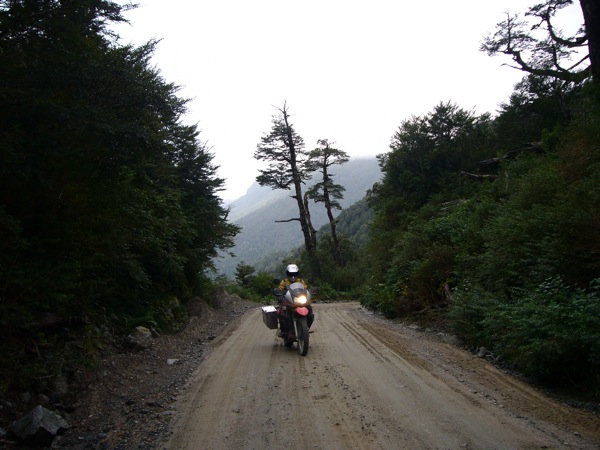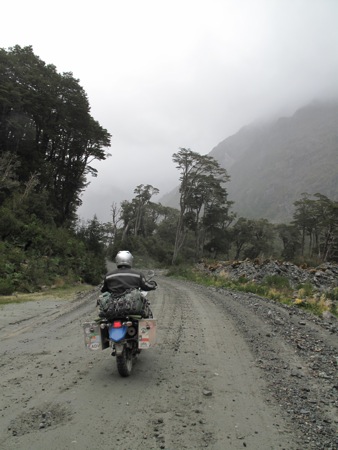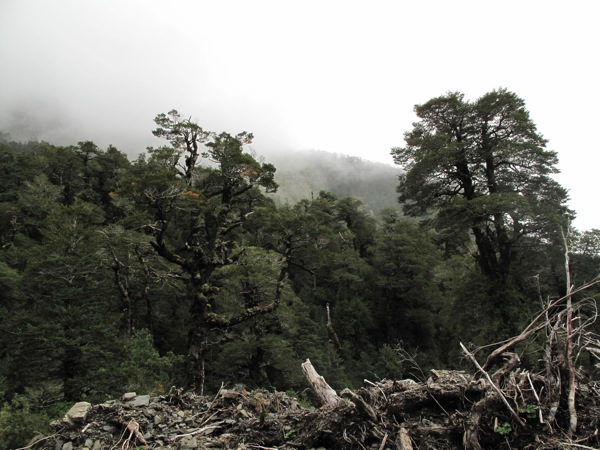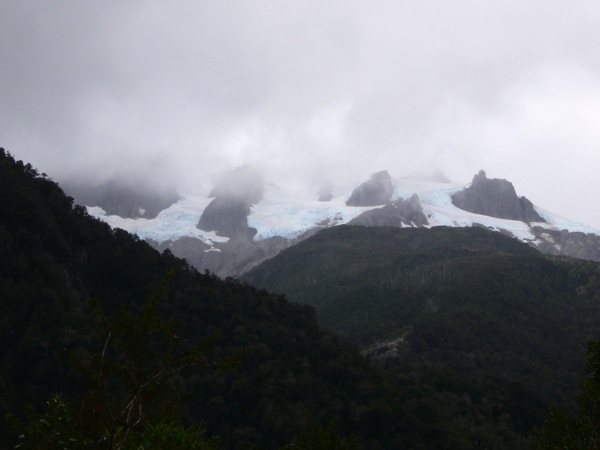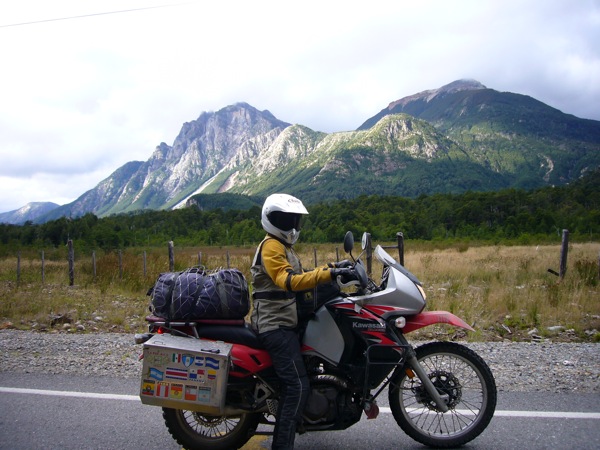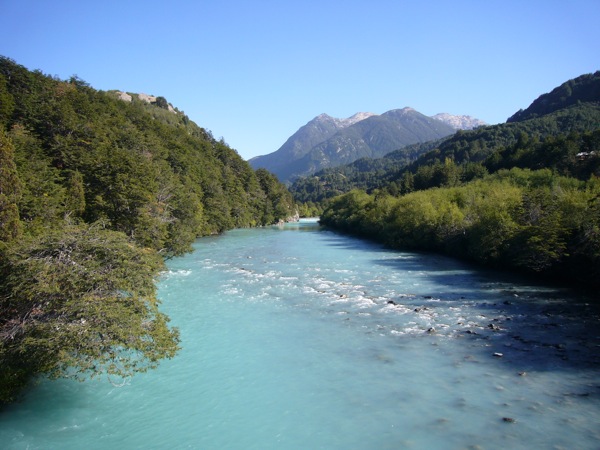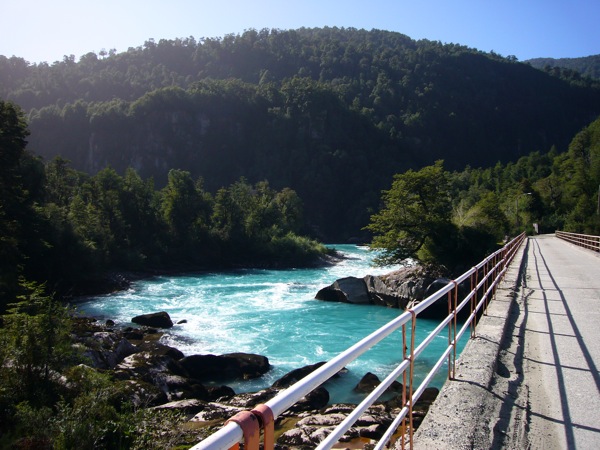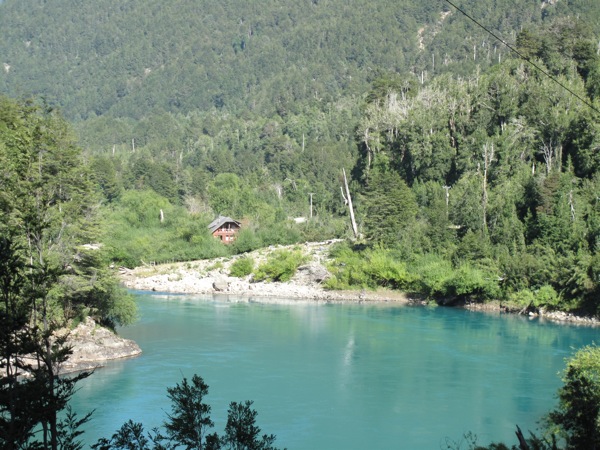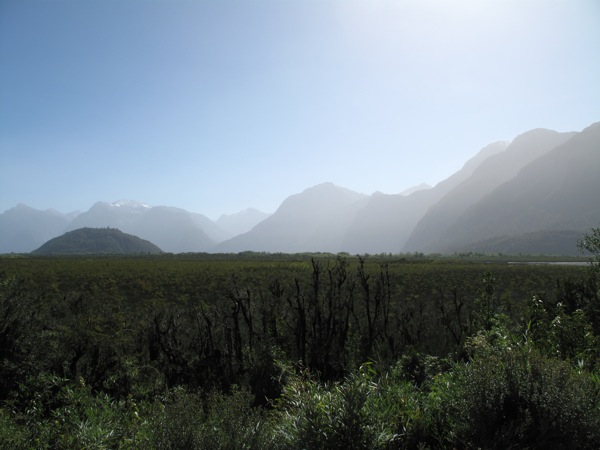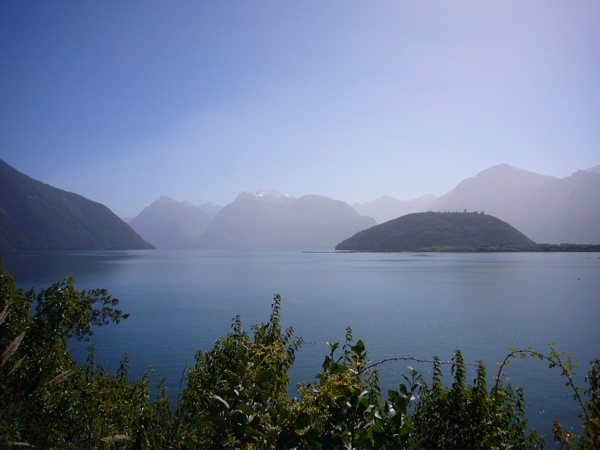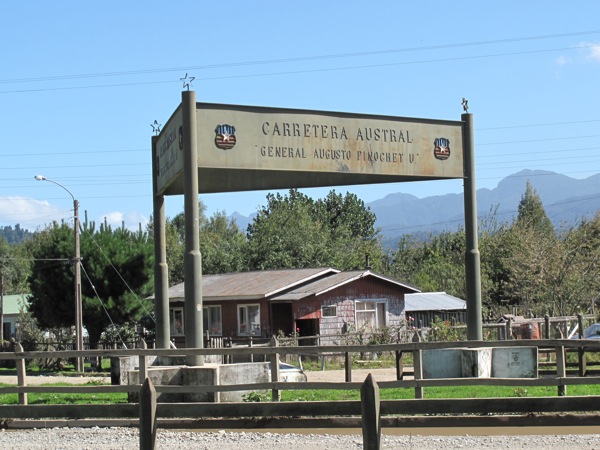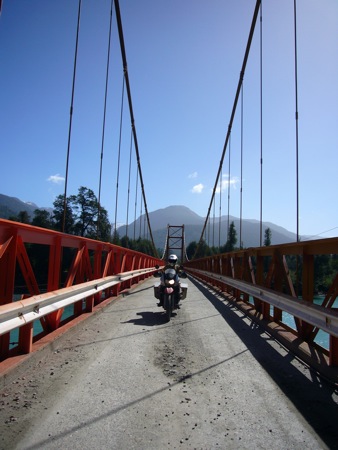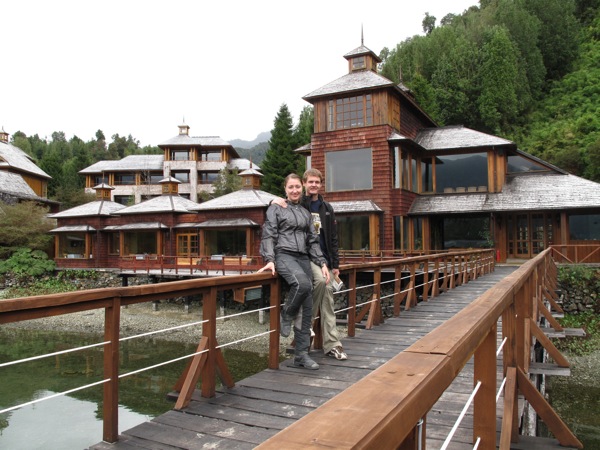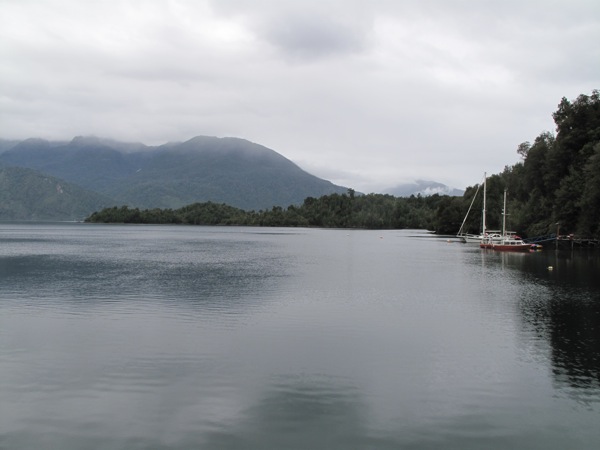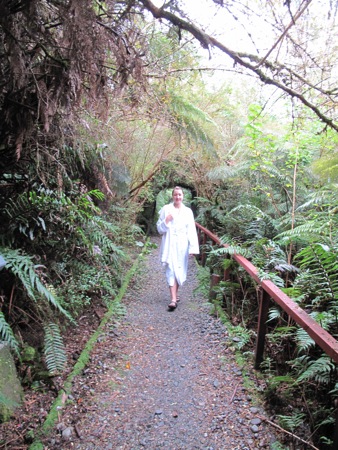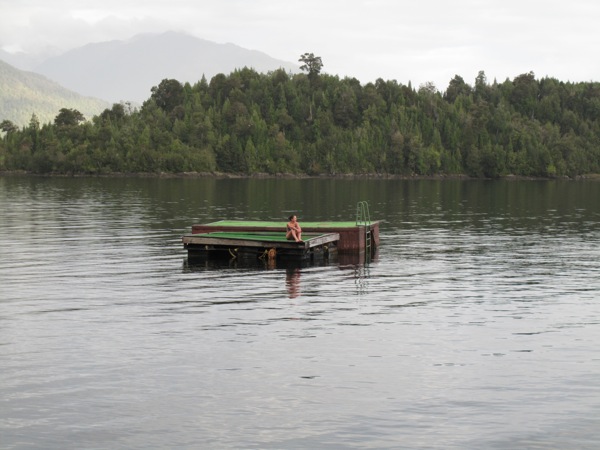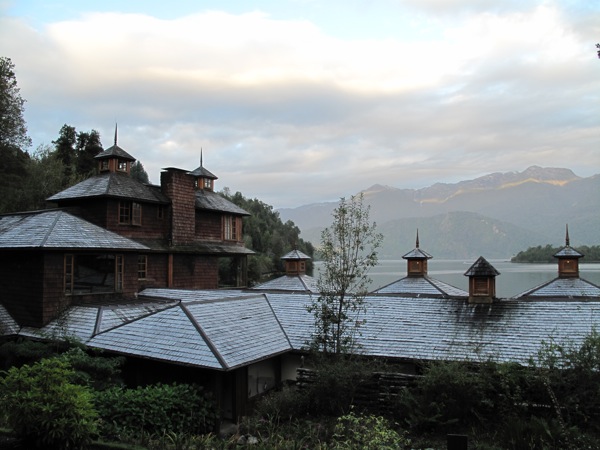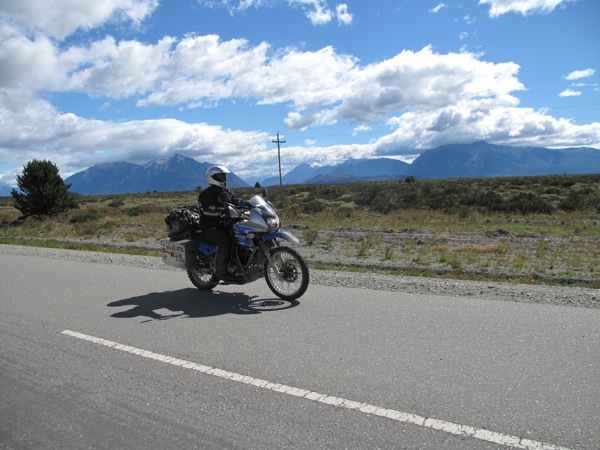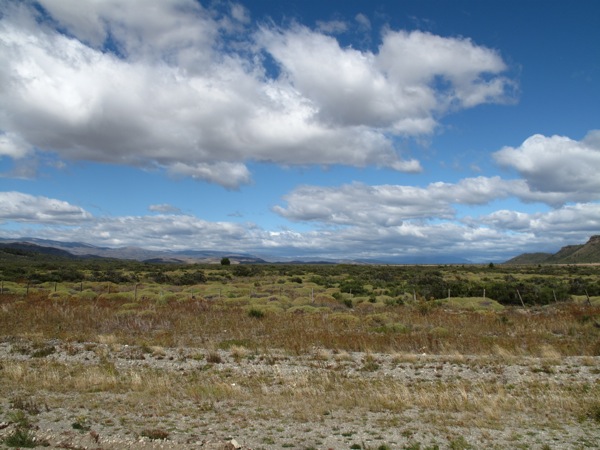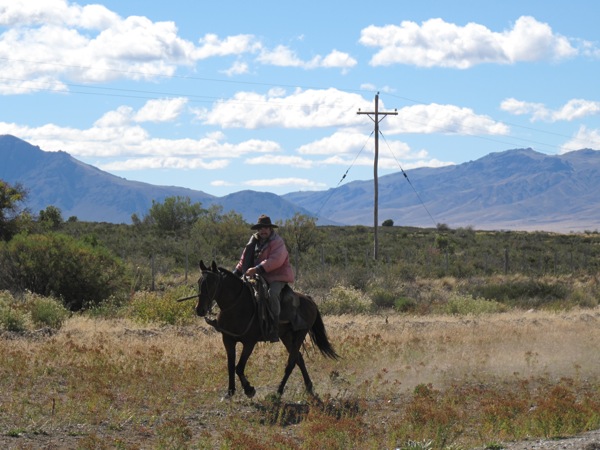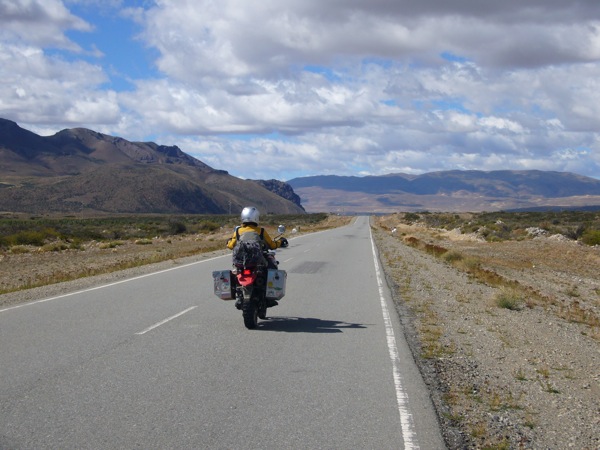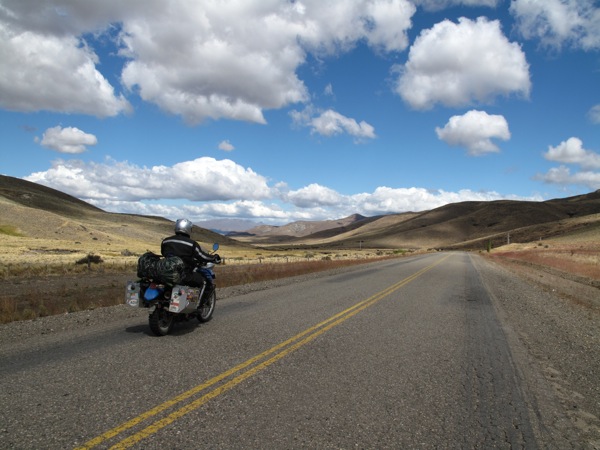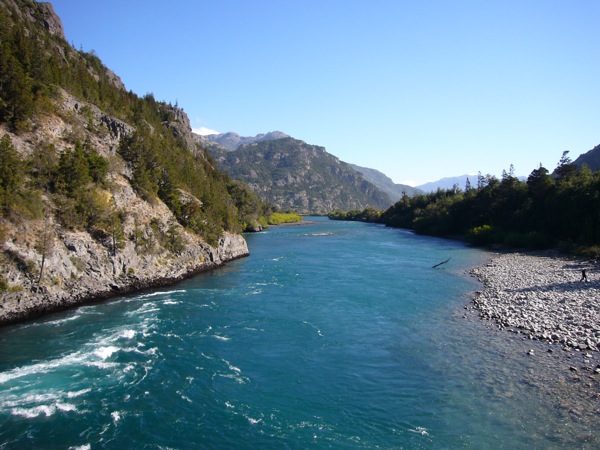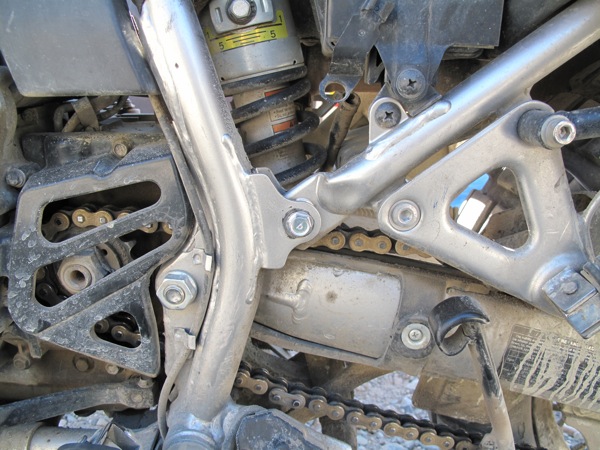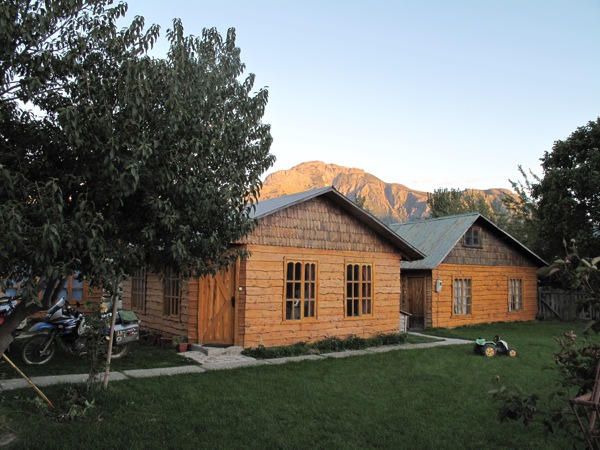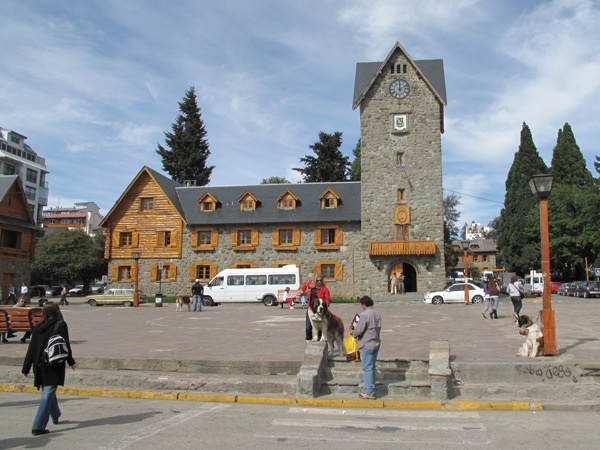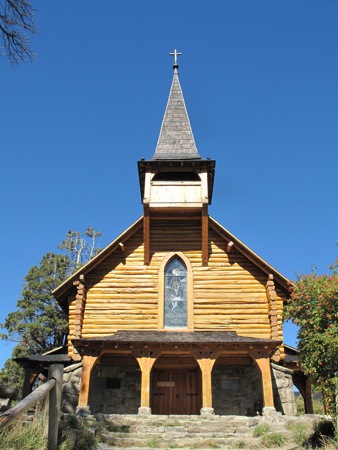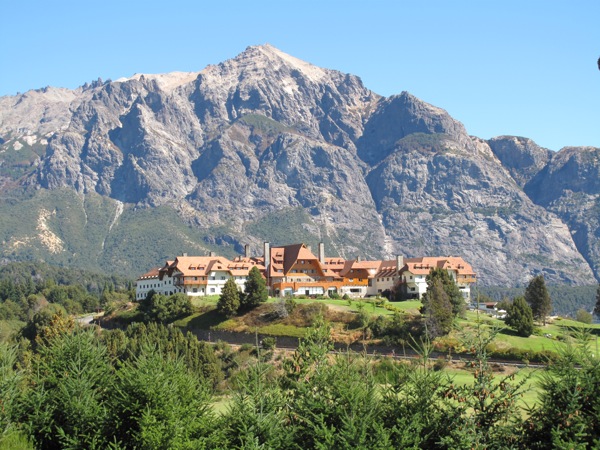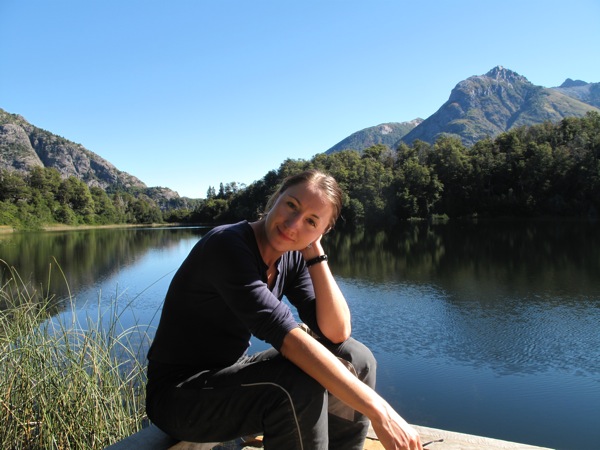Puerto Natales to Punta Arenas: Welding and Cold Night Riding
- on 03.29.09
- Chile
- No Comments
- Digg
- Del.icio.us
Friday, March 27
Our first priority for today was to find a welder. With Inna’s right pannier split at the seams and caved in and my right side rack missing a support. Knowing nothing opened early, we availed ourselves of the opportunity to sleep in until 9 am. Our hostel, Casa Cecilia, had perhaps the best breakfast in weeks. Freshly baked bread, cereals, yogurt, and real coffee were a veritable feast for us and we took our time eating.
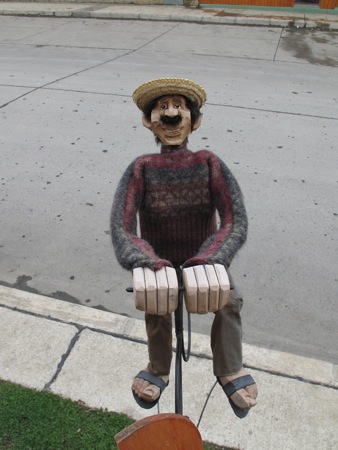
We left the hotel at 11 and were off to the welder. The shop was actually open, which was a nice surprise. He could do both steel and aluminum but the bad news was we would have to wait until he was free at 2:30. We considered moving on to Punta Arenas and looking for a welder there but decided that since we were sure we could get it fixed here we’d wait.
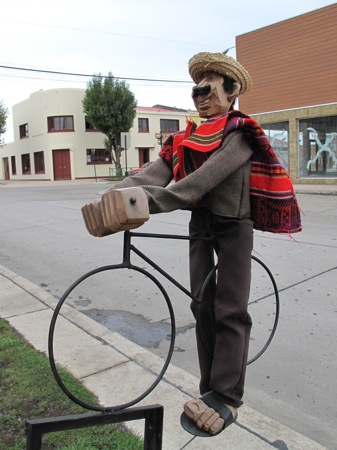
We found a cafe with WiFi and Inna settled in to write. I walked around town looking to buy some spare motor oil. After being sent from shop to shop when I arrived at the most promising shop it was closing for their 3 hour lunch after their grueling 2 hour work morning. I returned to the cafe and tried to do some writing on my phone.
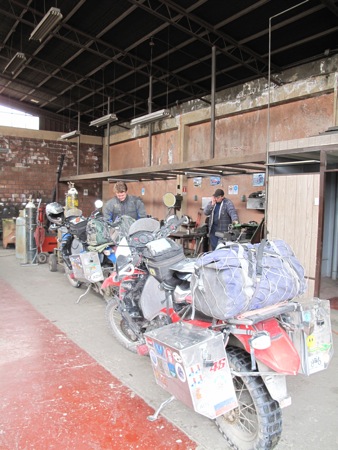
We had a snack before leaving for the shop at 2. We arrived early to unload the panniers. The welder got to work quickly, first hammering out Inna’s caved in right pannier. He rewelded the split seaming and did not have a very high opinion of the original work.

When I removed my right pannier so the rack could be repaired, I noticed a hairline crack had started along the edge. This would make 3 out of 4 panniers that failed and needed rewelding. The welder fixed this up and then started working on my rack.

The rack had taken quite a beating and had been bent in. He hammered the rack back into shape and rewelded the support. All of the welding he did was very well done and very clean. He even spray painted the welded spots to match the black rack.

Since we were so pleased with the quality of work and because a day had already been lost, we went all on repairs. We took Inna’s rack off to have it bent into shape and before he started he found a stress fracture that needed welding. Score! After straightening the rack he hammered the inside panel of the panniers so the mounting hardware would actually sit flush again. It was a long afternoon but we considered the time and money very well spent. The panniers were as good or better than new.
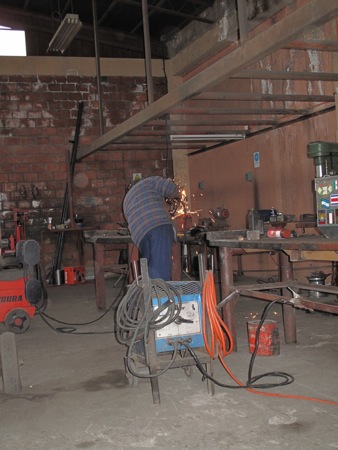
By the time we were done, it was almost 6. We had a 9 am ferry reservation the next morning in Punta Arenas, so we had little option but to hit the road. At the gas station, we ran into a Dutch guy riding a KLR. We chatted and traded KLR stories but it was already late so we cut it short and got going.
The ride to Punta Arenas was fairly miserable. Over 200 miles of cold windy darkness, with the latter half in the rain. It was very unpleasant and hard to see, but our riding gear held up well and we ground out the miles. Punta Arenas was visible from a frustratingly far away distance. We had great luck when we arrived as the first hotel Inna spotted, Hostal Patagonica, turned out great. The owner was a very friendly man and we were the only guests. Without taking off our riding gear, we walked to the supermarket for fruit and water. Back at the hotel we finally shed our gear and enjoyed a warm bed.
